Abstract
Cefsulodin sodium (SCE-129, CGP-7174/E), active in minimum inhibitory concentrations (MICs) of 0.5 to 64 microgram/ml, was about 16- to 32-fold more active than carbenicillin against Psuedomonas aeruginosa. It was also active against P. diminuta, P. maltophilia, P. paucimobilis, and P. pseudoalcaligenes (MICs of 1 to 32 microgram/ml) but not against other species of Pseudomonas or other gram-negative bacteria. Except with highly carbenicillin-resistant isolates, MICs of cefsulodin for P. aeruginosa were little affected by an increase in the inoculum. With a small inoculum, minimum bactericidal concentrations (MBCs) were the same as or twice the MIC, but increasing the inoculum had a greater effect on the MBC than on the MIC. Cefsulodin was not hydrolyzed by the beta-lactamase induced in P. aeruginosa by growth in the presence of benzylpenicillin and was a poor substrate for beta-lactamases from Enterobacter cloacae and Proteus morganii. However, it was hydrolyzed, albeit slowly, by the beta-lactamase produced by most of our highly carbenicillin-resistant isolates of P. aeruginosa and by TEM-type beta-lactamases.
Full text
PDF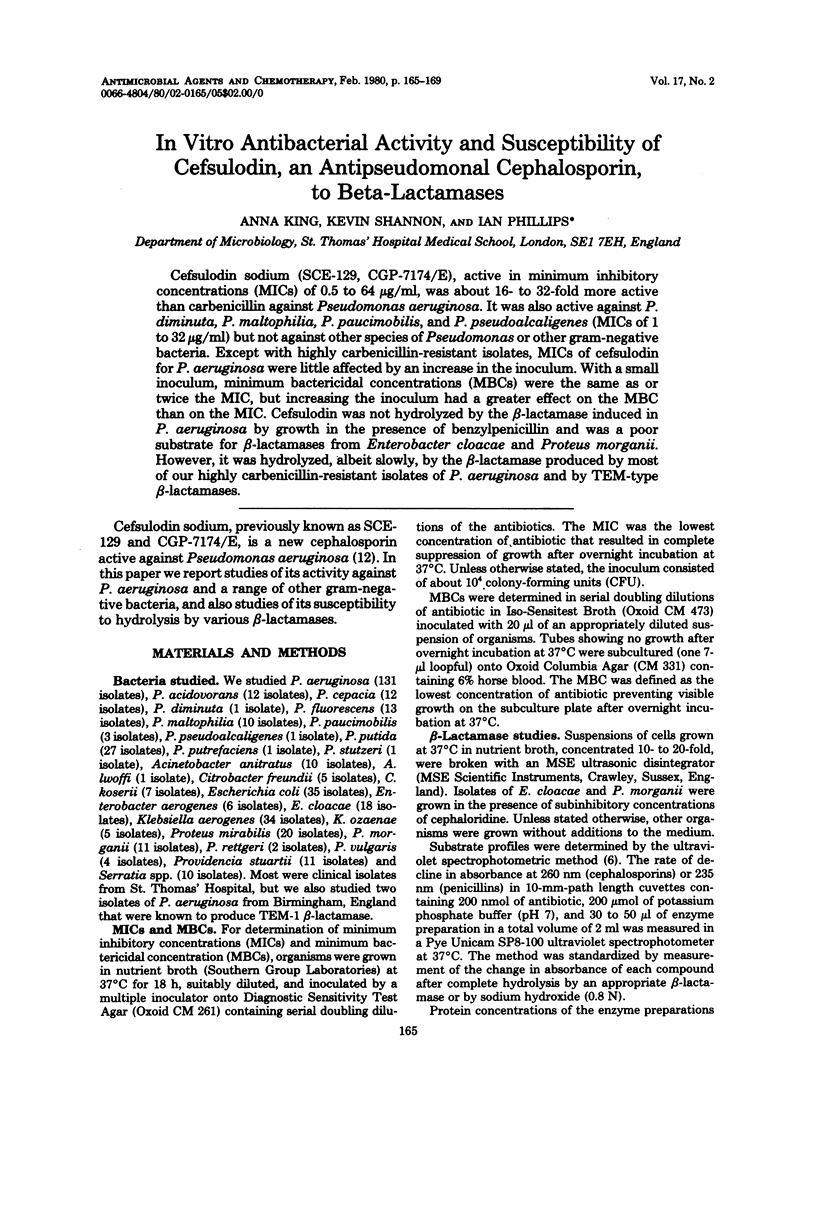
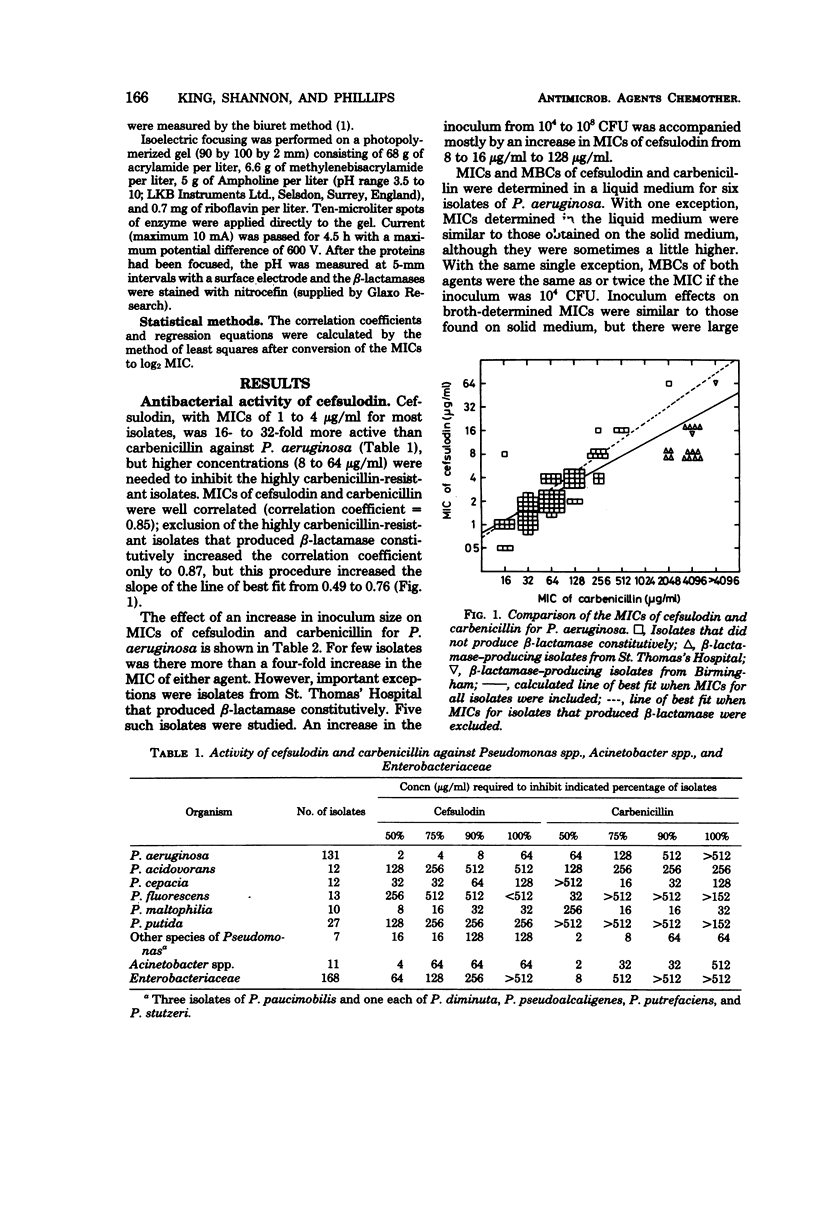
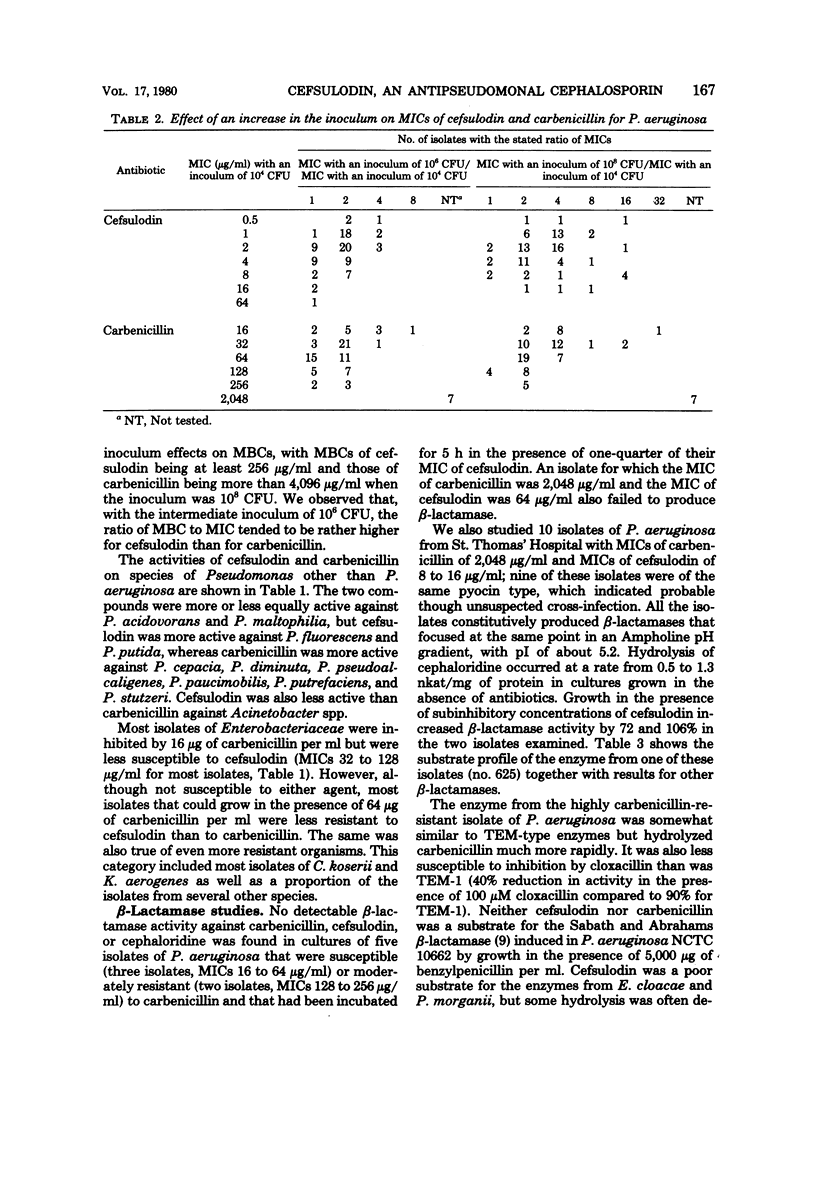
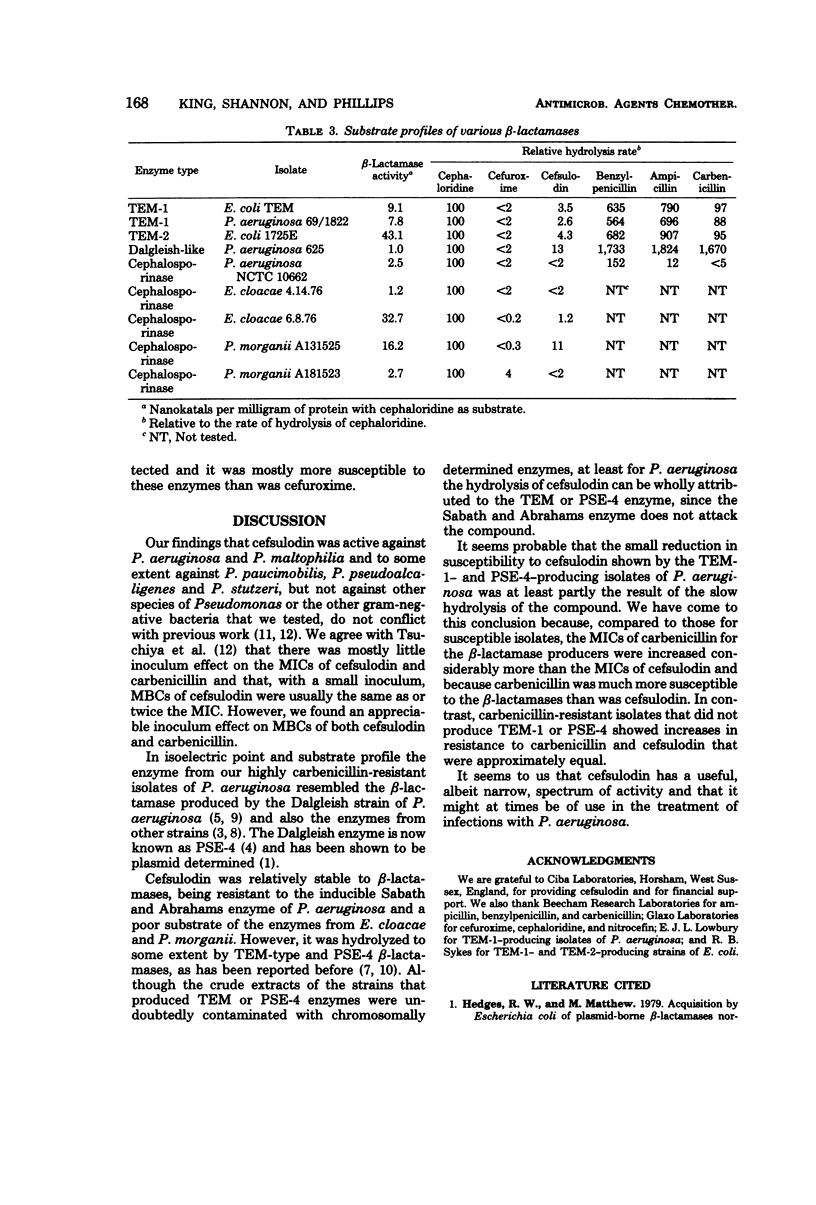
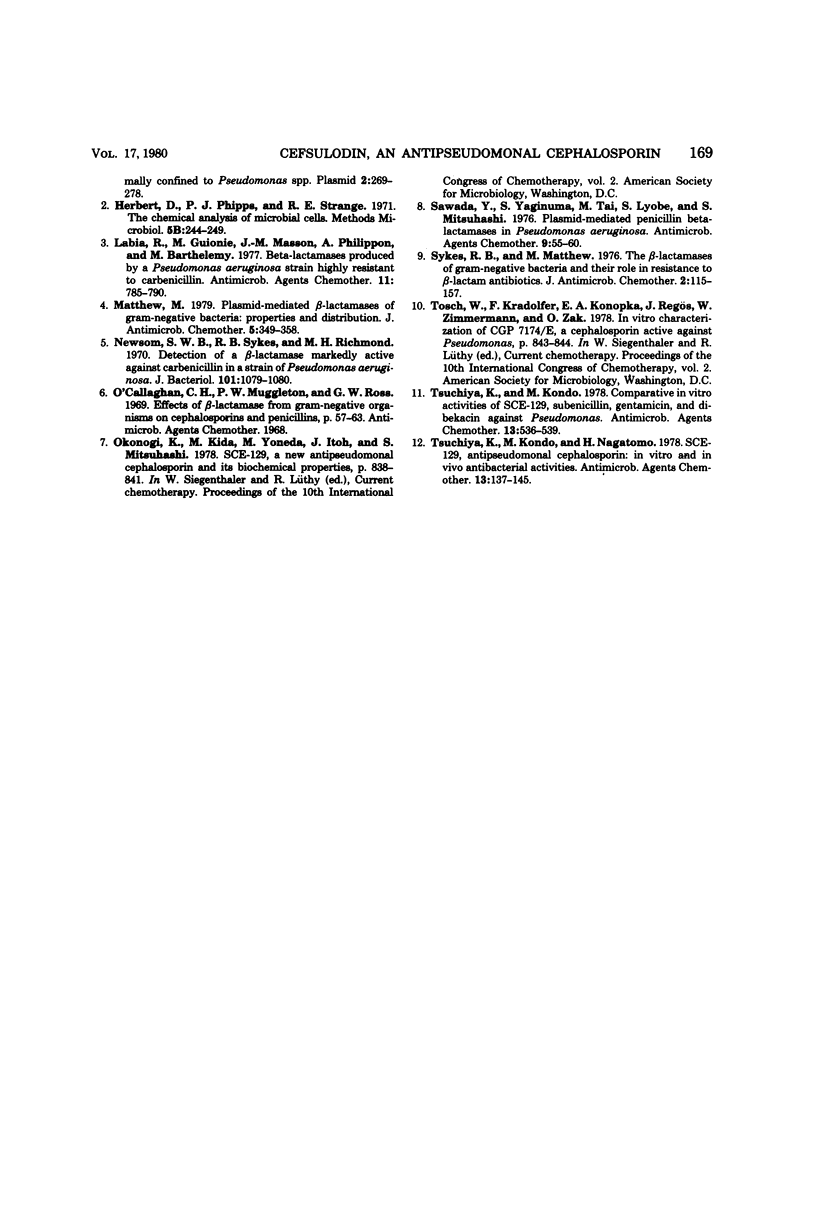
Selected References
These references are in PubMed. This may not be the complete list of references from this article.
- Labia R., Guionie M., Masson J. M., Philippon A., Barthelemy M. Beta-lactamases produced by a Pseudomonas aeruginosa strain highly resistant to carbenicillin. Antimicrob Agents Chemother. 1977 May;11(5):785–790. doi: 10.1128/aac.11.5.785. [DOI] [PMC free article] [PubMed] [Google Scholar]
- Matthew M. Plasmid-mediated beta-lactamases of Gram-negative bacteria: properties and distribution. J Antimicrob Chemother. 1979 Jul;5(4):349–358. doi: 10.1093/jac/5.4.349. [DOI] [PubMed] [Google Scholar]
- Newsom S. W., Sykes R. B., Richmond M. H. Detection of a beta-lactamase markedly active against carbenicillin in a strain of Pseudomonas aeruginosa. J Bacteriol. 1970 Mar;101(3):1079–1080. doi: 10.1128/jb.101.3.1079-1080.1970. [DOI] [PMC free article] [PubMed] [Google Scholar]
- Sawada Y., Yaginuma S., Tai M., Iyobe S., Mitsuhashi S. Plasmid-mediated penicillin beta-lactamases in Pseudomonas aeruginosa. Antimicrob Agents Chemother. 1976 Jan;9(1):55–60. doi: 10.1128/aac.9.1.55. [DOI] [PMC free article] [PubMed] [Google Scholar]
- Sykes R. B., Matthew M. The beta-lactamases of gram-negative bacteria and their role in resistance to beta-lactam antibiotics. J Antimicrob Chemother. 1976 Jun;2(2):115–157. doi: 10.1093/jac/2.2.115. [DOI] [PubMed] [Google Scholar]
- Tsuchiya K., Kondo M. Comparative in vitro activities of SCE-129, sulbenicillin, gentamicin, and dibekacin against Pseudomonas. Antimicrob Agents Chemother. 1978 Mar;13(3):536–539. doi: 10.1128/aac.13.3.536. [DOI] [PMC free article] [PubMed] [Google Scholar]
- Tsuchiya K., Kondo M., Nagatomo H. SCE-129, antipseudomonal cephalosporin: in vitro and in vivo antibacterial activities. Antimicrob Agents Chemother. 1978 Feb;13(2):137–145. doi: 10.1128/aac.13.2.137. [DOI] [PMC free article] [PubMed] [Google Scholar]


